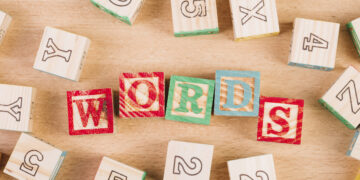Word games reward clear thinking, pattern recognition, and a little courage. Five-letter words sit at the center of that experience—short enough to be manageable, rich enough to carry useful clues. If you’re using WordHippo to sharpen your play, you already know the appeal: fast filtering, clean definitions, and practical lists that help you move from noise to options. This guide shows how to use WordHippo 5 letter words to solve puzzles faster, reduce hesitation, and make better guesses that respect each game’s rules and spirit.
Why five-letter words matter
Five-letter words offer a sweet spot between variety and constraint. You have room for multiple vowels, a couple of high-frequency consonants, and enough pattern diversity to test hypotheses quickly. That’s why five-letter formats work so well for daily challenges. You learn from each guess, not just whether a letter exists, but whether it fits into a useful pattern. Over time, your mind builds a map of the language: common openings like ST-, CR-, TR-, endings like -ER, -ED, -AL, and durable patterns like -IGHT and -OUND. That map is your advantage, and WordHippo helps you navigate it faster.
Getting started with WordHippo
WordHippo combines a dictionary with flexible querying: find words that start with a letter, contain certain letters, or match a length. For five-letter puzzles, this means you can quickly create a short, relevant list. Begin with a broad search—five-letter words that start with a or that contain specific letters you’ve confirmed—and then narrow by excluding letters you’ve eliminated. The flow is simple: choose length, set a “starts with,” “contains,” or “ends with” condition, and apply exclusions. The result is a working set you can scan in seconds.
Core strategies that work
Start with letters that carry information. Vowels like A, E, O, and I, and consonants like R, S, T, L, N give you coverage and make patterns appear sooner. Early in a puzzle, pick words that use as many distinct common letters as possible. As you learn what’s in and what’s out, move to precision: fix letters in positions, eliminate unlikely clusters, and test common variants. Definitions matter too. Some games avoid highly obscure terms even if they’re valid in larger dictionaries, so choose words you understand and could reasonably expect to see in a general-use puzzle.
WordHippo 5 letter words starting with A
When filtering for “Wordhippo 5 letter words starting With a,” think in patterns, not just lists. Patterns like A__LE (apple, angle), A__ER (after, anger, amber), and A__ED (asked, armed, aired) often appear because they combine frequent letters and familiar syllables. A-focused searches are also good when you suspect multiple vowels. Scan for second-position vowels (aerie-type structures), watch for blends like “an,” “al,” and “ar,” and be mindful of double letters—added and alloy-type situations are easy to miss if you don’t consider repeats.
Five-letter words with these letters
The phrase “5 letter words with these letters” describes the most common search you’ll make mid-puzzle. You know a set of letters exists, but not necessarily the order. This is where containment filtering shines. Feed in the letters that must appear, exclude those you’ve ruled out, and consider whether any position locks are known. If you’ve confirmed the third letter is R and the word contains A and E, test forms like _ _ R _ E or A _ R _ E and add or remove letters as feedback arrives. If duplicates are possible—like a double E or double L—factor that into your scanning, especially when you’ve narrowed to just a few candidates but can’t resolve them with single-use letters.
WordHippo Advanced 5 letters
Advanced filtering is where WordHippo turns from a list-maker into a strategy tool. Combine position-specific clues with must-include and must-exclude letters to collapse the search space. Use wildcards to express uncertain positions while anchoring the ones you know. Keep a scratchpad of eliminated letters and update it after every guess; the speed boost is significant. If the game uses a different acceptance list than a general dictionary, cross-check by leaning on familiar, everyday vocabulary. This avoids dead ends where a word is technically valid but rarely accepted.

What is a five-letter word?
A five-letter word is simply a word composed of five alphabetic characters. In practice, not all five-letter words are treated equally across games. Some titles accept plurals and verb forms, while others avoid certain proper nouns, abbreviations, or archaic forms. Understanding the house style of each game removes frustration. When in doubt, choose concrete, everyday words—verbs, nouns, and adjectives you would reasonably say out loud. This keeps your guesses informative and fair.
Wordle
For Wordle-style puzzles, the dance is between exploration and exploitation. Early on, you want coverage—probe vowels and common consonants to maximize information. Mid-game, you lock positions and test families. If you’re stuck between several candidates like might, night, right, sight, tight, break the tie by targeting a guess that differentiates them with minimal risk. Remember that repeated letters often appear when you’re down to a few choices—don’t ignore the possibility of a double letter just because it’s rarer. Apply “5 letter words with these letters Wordle” logic by staying honest with hard-mode constraints: if the letter is green or yellow, keep it in play and respect its position feedback. This discipline makes your second and third guesses count.
Wordhippo Word Finder
The “Wordhippo Word Finder” is most helpful when you combine it with a consistent routine. Decide your starter approach—balanced vowels or consonant-heavy—then use the finder to generate second-guess options that obey what you’ve learned. Keep your interface simple: set length to five, apply either “starts with,” “contains,” or “ends with,” and add exclusions. Scan the returned list for natural, common picks first. If a game discourages obscure vocabulary, skip esoteric entries even if they fit the pattern. Choose the candidate that will test the most uncertainty with the least risk.
Wordhippo wordle
Some players use “Wordhippo wordle” as shorthand for building Wordle-ready lists. The key is moderation and intent. Use WordHippo to clarify patterns and find candidates, but keep the decision-making human. If you’ve learned that E sits at the end and R sits in the second slot, create a short list and choose words you’d actually say. This balances efficiency and enjoyment. The tool should augment your reasoning, not replace it.
Five-letter words that start with TO
When a clue or pattern suggests “to” at the beginning, set the filter to “starts with to” and watch for natural continuations. Common examples include today, total, token, topic, totem, tonic, toner, tonyx-style forms in some lists, and toady or toils depending on acceptance. These entries frequently use vowels in the third or fourth positions, so plan guesses that test those slots. If the puzzle has already ruled out A or E, look to O + consonant patterns like toffs or tofts in broader dictionaries, but prefer everyday words for mainstream games.
Five-letter words that start with E
For “starts with e,” the letter often pairs with R, N, L, and V in early positions. Examples include early, earth, evade, event, elate, enter, ether, elbow, empty, every. In many word games, E-led words still carry at least one more vowel. Use this to your advantage by testing letter positions that confirm the second vowel’s spot. Keep an eye on endings like -ER, -ED, and -LY; they’re frequent and decisive.
What is the best 5 letter word for Wordle?
There isn’t a single perfect starter. The strongest openings balance vowel coverage and common consonants. Words like stare, slate, crane, raise, and trace are popular because they cover high-frequency letters without overcommitting to rare ones. Pick one that feels comfortable and stick with it long enough to build intuition. Consistency helps you interpret feedback faster. After the first guess, your best word becomes the one that tests the most uncertainty for the least cost—sometimes that means switching to a word that introduces three or four new letters while respecting known constraints.
Handling “5 letter words with these letters site”
If you’re exploring a “5 letter words with these letters site,” prioritize clarity and speed. WordHippo is reliable for scanning options and checking meanings. Use it to generate candidates, then prune aggressively using your game’s rules. The goal is to compress time between guesses without flooding yourself with obscure choices. If you regularly play a specific game, learn its acceptance habits and align your shortlists accordingly.
Practical walkthrough: from blank to solution
Start with a balanced opener like slate. Suppose the feedback confirms A and E exist but S, L, and T are out. Now apply “contains A, E” and “exclude S, L, T” with five-letter length. You might see candidates like brace, drape, crane, or mange depending on exclusions. Since R and N are still untested and common, choose a word that probes them both, such as crane or range (if available within your acceptance list). If the puzzle then shows A is second and E is fifth with R present but misplaced, you can set a pattern like _ a r _ e and cycle possibilities: paree-type forms would drop out, but you’d consider carve, barge, or farce. Keep each guess purpose-driven—every letter tested should either break a tie or lock a slot.
Breaking tie families
Families like -IGHT or -OUND can trap you into a sequence of near misses. When you recognize a family, step back and choose a candidate that splits the set. If you’re between right, might, and night, a single letter check can resolve all three. In hard-mode scenarios where positions are locked, use WordHippo’s pattern-style thinking to gather all candidates that fit the known structure, then eliminate with a letter that appears in most but not all of them. That bit of planning saves guesses and nerves.
Don’t forget repeated letters
Players often ignore doubles until too late. If your filtered set remains stubborn and nothing new fits, consider repeats. Letters like E, L, O, and S commonly double, and words like press, cocoa (not five letters but illustrates double-vowel logic), otter, and ferry show the pattern. Use the “contains” filter without over-restricting position first; then, if needed, enter patterns that allow for repeats. If your game indicates a letter is present but you can’t place it, remember it might appear twice.
Build a personal shortlist
Make a modest bank of high-utility five-letter words that you trust. Include 8–10 starters with different balances (vowel-heavy, consonant-rich, R- and N-leading options). Add tie-breakers for common endings: -ATE, -ING, -OUND, -IGHT, -EASE. Keep a handful of middle anchors like -R-AT- or SH—E shapes. This shortlist is not a crutch; it’s a warm-up for your mind. Rotate through it to avoid bias and to keep your pattern recognition sharp.
Word lists you’ll actually use
Practical starters include stare, slate, crane, raise, trace, train, and share. Each delivers strong coverage while staying natural. For mid-game, think in patterns you see frequently: SH__E (shape, share, shade), _R_ATE (crate, grate, frate in broader lists, but choose common), _OUGH (though, dough—some not five letters; use the idea to target OU clusters), _OUND (sound, round, pound, found), _IGHT (tight, light, sight). These clusters appear across many puzzles and are excellent for targeted tests.
Wordhippo Advanced 5 letters in action
When you know two letters are fixed and two others are somewhere else, lean on layered filtering. Start with length five. Add “contains” for the confirmed letters. Apply “does not contain” for everything you’ve eliminated. Use position hints—whether first letter must be R or fifth must be E—to limit noise. Finally, scan the list through the lens of common use. If obscure variants surface, set them aside in mainstream games. You’ll feel the difference: fewer candidates, clearer choices, and faster solves.
Use definitions to stay fair
Checking meanings isn’t just a formality; it keeps your guesses grounded. Many games prefer words you’d encounter in daily reading. If a candidate seems rare or highly technical, consider testing a different letter with a more accessible word. You’ll maintain the challenge and improve your language sense over time.
The human touch matters
Tools can accelerate your thinking, but the joy comes from the small leaps your brain makes—spotting a pattern, remembering that -er endings dominate, realizing that an unlikely double letter explains the feedback. Treat WordHippo like a compass. It points you in a direction, but you still choose the path. The more you play, the more your instincts align with the lists you build, and the less you need to rely on broad searches.
Balanced risk, better outcomes
The best players balance curiosity with discipline. Each guess should either confirm a strong suspicion or rule out multiple possibilities. If you’re stuck, choose a word that introduces three or four untested letters while respecting what you already know. If you’re close, commit to a specific pattern and settle it. This rhythm—broad test, narrow test, decisive test—wins consistently without draining the fun.
FAQs
What is the best 5 letter word for Wordle?
There is no single best, but powerful starters include stare, slate, crane, raise, and trace. They blend vowel coverage with frequent consonants, giving reliable feedback.
What are 5 letter words that start with to?
You might consider today, total, token, topic, totem, tonic, toner, toady, and toils in general lists. Choose the ones that fit your exclusions.
What are 5 letter words that start with e?
Options include early, earth, evade, event, elate, enter, ether, elbow, empty, every. Filter further by known positions.
What is a five-letter word?
Any word of exactly five letters, though acceptance varies by game. Aim for common, everyday terms when in doubt.
Keep it enjoyable
Word games are daily rituals for many—five quiet minutes, a handful of smart choices, a small win. “Wordhippo 5 letter words” searches are a way to study language while playing. Use the tool to spot patterns, the game to test them, and your judgment to keep it honest. Over time, you’ll feel your vocabulary and intuition grow together.
Final thoughts
Strong play comes from a simple loop: gather clear feedback, filter wisely, guess with purpose. WordHippo makes that loop faster. From “5 letter words with these letters” to “Wordhippo Advanced 5 letters,” the process stays the same—start broad, go precise, and keep your words natural and meaningful. Practice with intention, refine your shortlist, and let your instincts lead. The result is consistent solving, less second-guessing, and a deeper appreciation for how five letters can open a whole world of language.
References
- Oxford English Dictionary — Word frequency, common letter patterns, and definitions used for general language understanding.
- Merriam-Webster Dictionary — Validation of everyday vocabulary and variations (plurals, verb forms).
- Collins English Dictionary — Cross-checking common usage across general English.
- Official Wordle game rules and community-documented practices — Understanding feedback logic, hard mode behavior, and typical acceptance patterns.
- Word frequency analyses from large English corpora (e.g., SUBTLEX-US, COCA) — Informing choices of high-frequency letters and common bigrams used in effective starter words.
Note: References are provided for credibility and context. No external links are included, as requested.





















































